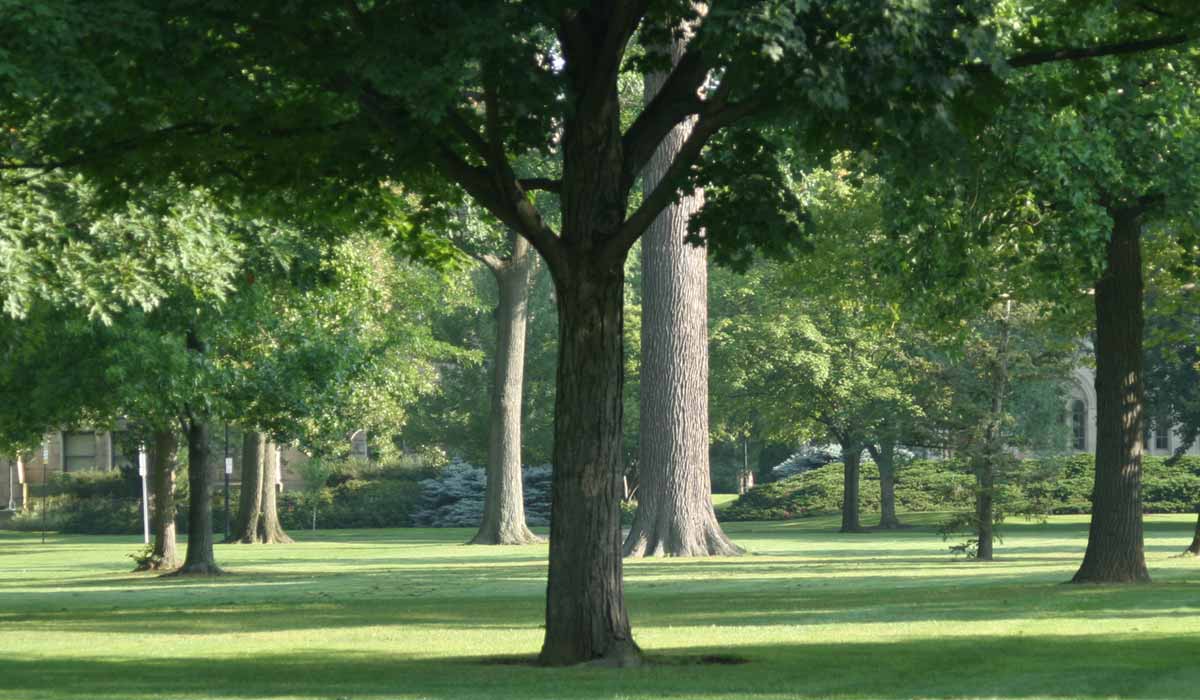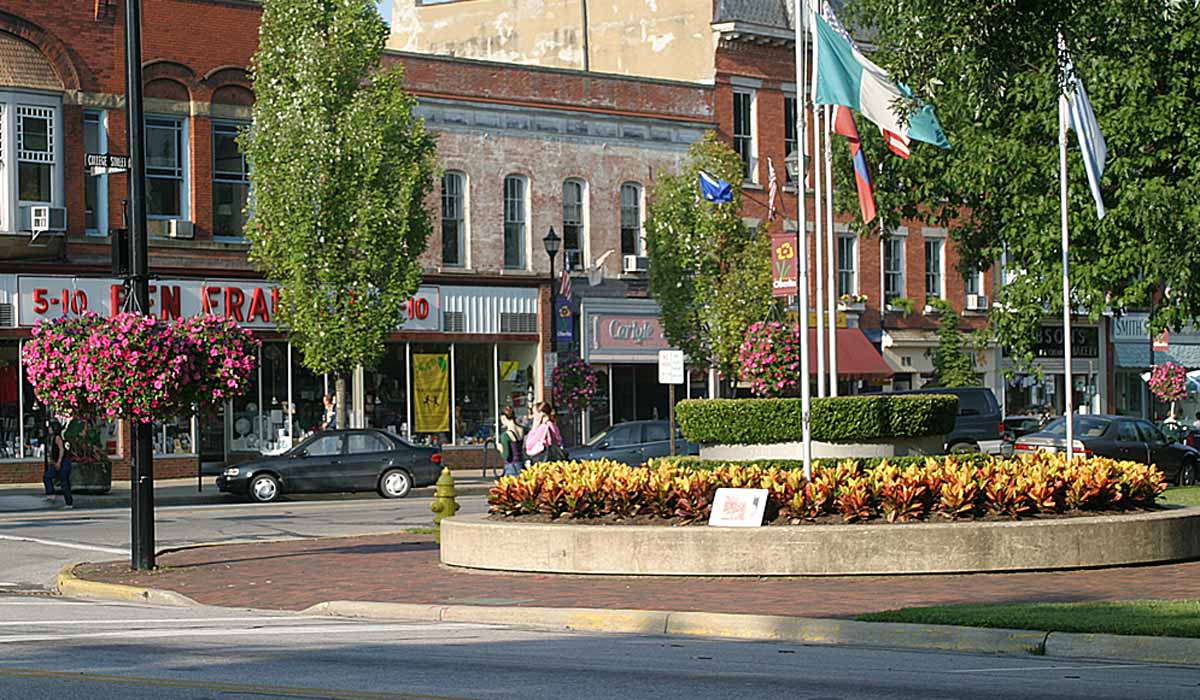From Waste to Food - Thinking in Multiples of Four
- Hits: 5709
- 0 Comments
- Subscribe to updates
- Bookmark

In a scene reminiscent of the growth of urban agriculture, a group of about 50 people gathered on the lawn of the former Huron Road Hospital in East Cleveland in 2007 to install a garden. One uninitiated to the unique culture of urban farming might wonder why people were so gleefully spreading out piles of garbage all over the hospital lawn. One might even be tempted to report the violation to the local health department, only to find out that the band of children, doctors, hospital staff, neighbors, and fellow urban gardeners were spreading garbage all over the lawn with the full sanction of the county health department. They were turning compostable waste from the hospital into soil to support a garden.
The garden installation took place as a part of City Fresh, an initiative that begun in 2005, as a part of the New Agrarian Center, to help establish healthy food access in urban neighborhoods. A study conducted by the Cleveland Food Policy Coalition indicated that the average Clevelander travels four times further distance to reach a full-service grocer than a fast food establishment. This impacts public health, causing a wide-range of diet-related challenges, from diabetes to heart disease. Local food systems, whether in the form of farmers markets, Community Supported Agriculture programs like City Fresh, or urban gardening can help improve access to healthy food in a neighborhood.
In addition to organizing a share distribution program, City Fresh worked with Ohio State University Extension to begin a market garden training program, which would encourage the cultivation of vacant lots in the city and improve the local food supply.
The garden installation in East Cleveland was headed by Maurice Small, an avid urban gardener and local food activist who helped establish the City Fresh program, A modern-day Johnny Appleseed, Maurice has facilitated the establishment of hundreds of gardens across Northeast Ohio over the past 20 years.
Maurice mastered the art of healthy soil development by leveraging an abundant asset common to all urban centers- organic waste. In the weeks leading up to the garden establishment at the hospital, Maurice worked with cafeteria staff to have them collect food scraps from kitchen prep waste. He also worked with the administrative offices to collect shredded office paper (excluding any carbon-copy paper) and with the janitorial staff to have cardboard broken down and stockpiled. Theses wastes became the key ingredients for a lasagna style raised bed installation.
Volunteers laid out a layer of cardboard at the bottom of the garden and then spread shredded office paper and recycled newspaper over the cardboard. This adds carbon to the garden, which then becomes organic matter, an important component of healthy soil that helps with nutrient retention and transfer.
As the volunteers finished laying down the cardboard and paper, Maurice shared his approval, leaping headfirst into the pile of shredded paper and paddling his way to the other side of the bed.
???It???s so beautiful!??? he quipped, as he crawled out of the bed to the laughter and approval of the on-looking volunteers.
See Maurice Small swim in compost as community volunteers install a hospital garden. To see more clips about compost efforts large and small, including the George Jones Farm, click here.
He instructed the gardeners to mix food waste into the pile and to coat the top of the bed with a thin layer of topsoil. After about two hours of work, volunteers planted the beds, providing a source of vegetables as well as nutritional education for residents and low-income patients of the hospital.
Two stacks of straw bales lined the raised bed; helping to keep the organic materials contained while the plants became established. Leaning against a rusty garden fork, his main implement for mass creation, Maurice told me about the four cycles of straw.
He explained how the straw began its life as wheat, producing high-calorie seeds harvested by the farmer. The farmer then baled the waste-straw stems remaining after harvest. The farmer used some of the bales to insulate the perimeter of his house to keep it warm for the winter. Maurice picked-up the bales after they were gathered in the spring from around the farmers house and delivered them to Cleveland to line the perimeter of a garden. As the walls of the raised beds decompose, the straw can be used for mulch or to make compost.
That stuck with me. The four cycles of straw- wheat, insulation, raised bed, compost. A couple of years later, I replicated this process myself, acquiring straw bales from a farm near Oberlin to insulate an exposed breakfast nook in my house. After winter, I busted up the bales to make compost and mulch for my gardens.
As I thought back six years ago to the garden installation in East Cleveland, I realized that it contained a lesson instructive for the local food movement. Cities consume large amounts of food and generate large amounts of organic wastes. In a natural ecosystem, waste does not exist. Everything is continuously transformed through cycles of growth and decay. In that sense, urban waste can become an important input to support local agricultural production, reducing landfill burdens and retaining all of the value that those organic materials contain.
The Oberlin community has a number of opportunities to connect its waste streams to local agriculture. Like the straw bales that Maurice described, waste can be transformed to become productive inputs, including organic matter, nutrients, or even energy. As rising fuel prices and the increasing scarcity of common fertilizers like phosphorus continue to mount, we can look to generate more value from our own waste streams while reducing input costs for local farmers.
Food waste can be fed to pigs, loaded into a bio-digester to produce energy, or composted through a variety of methods to retain nutrients and organic matter. Organic materials can be composted on the scale of a backyard garden or processed through a large, commercial-scale facility. Each process produces the same values: healthier plants, improved soil, and happier people.
As Oberlin continues to grow its local food economy, we can find many valuable assets within our community. Instead of devoting a great deal of energy and time to haul away and bury our organic waste, it can go through several cycles of transformation, creating value and even potential livelihoods along the way. The food scraps of today become the delicious produce that we pick-up at the farmers market tomorrow.
And with each turn of the cycle, the fertility and quality of our local soil improves.
See the Huron Road Hospital story and many other inspiring stories about local food efforts in Cleveland, Oberlin, and across Northeast Ohio, at the Oberlin Project???s screening of PolyCultures- Food Where We Live, an official selection of the 2009 Cleveland International Film Festival and five other festivals around the world. The film screens at 2:00pm on August 30 and again at 2:00pm September 1st at the Oberlin Public Library. Click here to see a trailer for the film.










Leave your comment